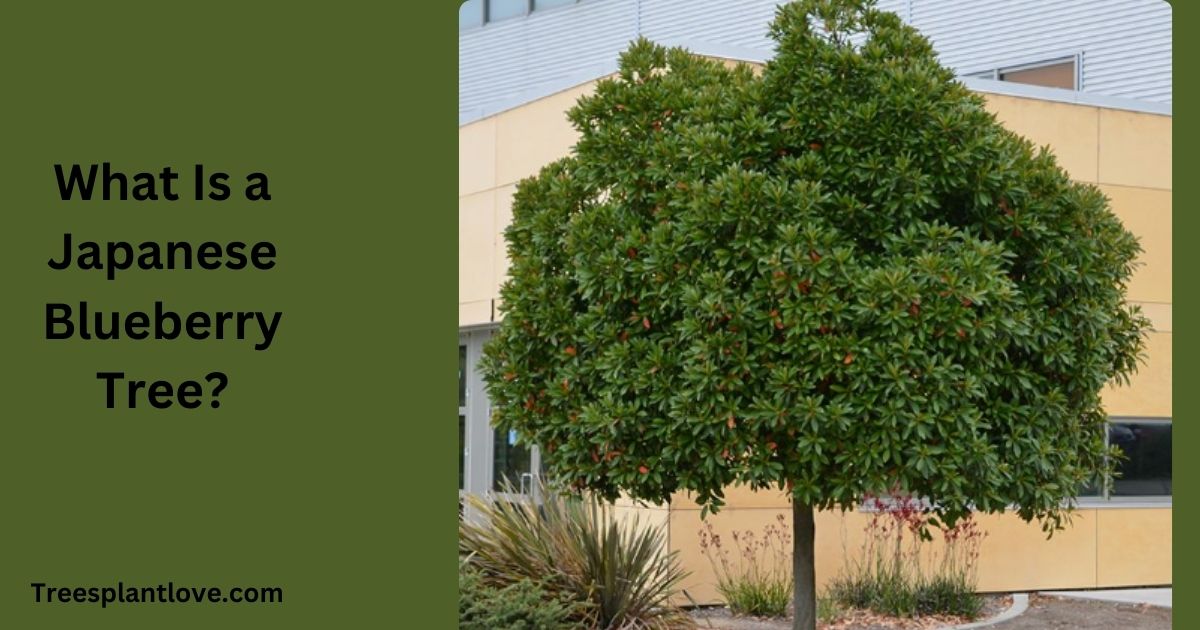
What Is a Japanese Blueberry Tree? How to Care for and Grow It Successfully
What Is a Japanese Blueberry Tree?: The Japanese blueberry tree (Elaeocarpus decipiens) is an elegant, evergreen tree native to East Asia, particularly Japan, Taiwan, and China. Known for its attractive foliage, striking fruit, and adaptability to a variety of climates, it has become a sought-after addition to gardens and landscapes around the world.
But what exactly makes this tree stand out, and how can you ensure it thrives in your own yard? In this article, we’ll explore the characteristics of the Japanese blueberry tree, its benefits, and the best practices for nurturing it to full potential.
Understanding the Japanese Blueberry Tree
Despite its name, the Japanese blueberry tree is not related to the common blueberry (Vaccinium spp.) that produces edible berries. The tree’s name comes from the appearance of its blueish-purple fruits, which resemble blueberries but are actually not edible for humans. These fruits are small, spherical, and typically grow in clusters. As the tree matures, the fruit provides a striking visual contrast against its glossy, dark green leaves.
Size and Growth Habit
The Japanese blueberry tree is a medium-sized tree that can reach heights of 25 to 30 feet (7.5 to 9 meters) and spread 15 to 20 feet (4.5 to 6 meters) wide. It has a slow to moderate growth rate, which makes it suitable for both residential and commercial landscapes. Its upright form, dense foliage, and small white flowers add charm year-round, especially in the warmer months when it is in full bloom.
Leaf and Flower Characteristics
The tree’s evergreen leaves are leathery and lustrous, providing year-round visual interest. In spring, the tree produces delicate, white or pale-pink flowers that grow in small clusters. These flowers are not particularly large but offer a soft and fragrant display that attracts pollinators such as bees and butterflies.
How Does a Japanese Blueberry Tree Thrive?
While the Japanese blueberry treeis relatively low-maintenance, it does require the right growing conditions to truly thrive. Understanding its environmental preferences is key to ensuring it grows healthy and strong.
Climate and Temperature Requirements
The Japanese blueberry tree is hardy in USDA zones 8 to 10, meaning it can tolerate mild winters and hot summers. It prefers a temperate climate and can handle some heat, but it is not suited for extremely cold conditions. If you live in an area with harsh winters, it’s best to grow the tree in a sheltered location or in a container that can be brought inside during colder months.
Soil Preferences
Japanese blueberry trees are adaptable to various soil types but perform best in well-drained, slightly acidic to neutral soil. While they can tolerate clay, sandy, or loamy soil, good drainage is essential to prevent root rot. If your soil is heavy or poorly draining, consider amending it with organic matter or planting your tree in a raised bed to improve aeration and water movement.
Watering Needs
While young Japanese blueberry trees require consistent moisture to establish strong roots, mature trees are somewhat drought-tolerant. However, they perform best with regular watering, especially during dry spells or extreme heat. It’s important to water deeply and infrequently, allowing the soil to dry out between waterings to avoid over-saturation, which can harm the roots.
Sunlight Requirements
Full sun to partial shade is ideal for a Japanese blueberry tree. When planted in full sun, the tree will grow more vigorously, with denser foliage and a more upright shape. However, in areas with intense afternoon heat, some afternoon shade may help protect the tree from excessive stress. It’s important to find a balance that suits your local climate and landscape conditions.
Fertilization
Japanese blueberry trees are not heavy feeders but will benefit from periodic fertilization. A balanced, slow-release fertilizer applied in early spring will promote healthy growth, especially if the soil lacks essential nutrients. Avoid excessive nitrogen, which can encourage too much foliage growth at the expense of fruiting.
Pruning and Maintenance
Although the Japanese blueberry tree is relatively low-maintenance, occasional pruning helps to maintain its shape and remove any dead or damaged branches. Prune the tree after flowering to maintain its overall appearance and encourage air circulation within the canopy. If you’re growing the tree as a hedge or privacy screen, regular trimming will help maintain its dense, full growth.
Pests and Diseases
While generally pest-resistant, the Japanese blueberry tree can occasionally fall victim to common garden pests such as aphids, scale insects, and spider mites. These can usually be controlled with appropriate insecticidal soap or horticultural oils. In terms of diseases, the tree is susceptible to root rot in poorly-drained soils, so it’s important to ensure good drainage and avoid waterlogging.
Benefits of Growing a Japanese Blueberry Tree
Beyond its aesthetic appeal, the Japanese blueberry tree offers several benefits to gardeners and landscapers:
- Attractive Foliage: The glossy, dark green leaves provide year-round interest, while the tree’s striking blue fruits add visual interest in late summer and fall.
- Wildlife-Friendly: The small, non-edible fruits attract birds and other wildlife, making the tree a valuable addition to wildlife gardens.
- Versatility: Whether grown as a specimen tree, hedge, or part of a larger landscape design, the Japanese blueberry tree adapts well to a variety of roles in the garden.
- Low Maintenance: With its resistance to pests and disease, as well as its ability to tolerate a range of soil conditions, this tree is relatively easy to care for.
Conclusion
The Japanese blueberry tree is a beautiful and adaptable addition to any landscape, offering year-round beauty with minimal care. By planting it in the right environment—ensuring good soil drainage, providing adequate sunlight, and regular watering—you can enjoy its stunning foliage, delicate flowers, and unique blue fruits. Whether you’re a seasoned gardener or a beginner, the Japanese blueberry tree provides a rewarding and low-maintenance option for enhancing your outdoor space.

Leave a Reply